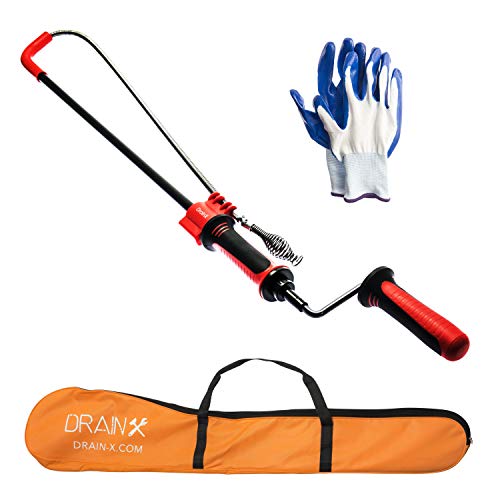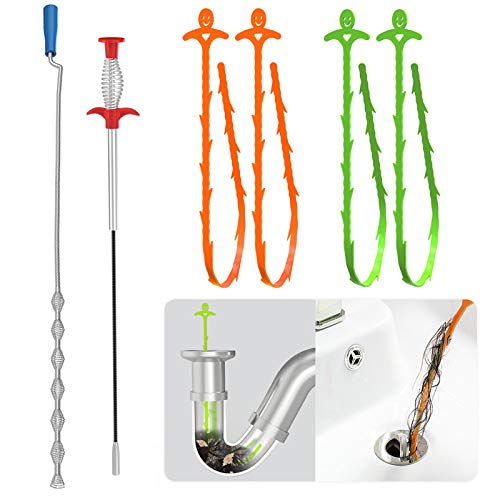Best Toilet Auger Of 2024: Completed List
Brandon Forder May 17, 2024 7:55 AM
When a sink or toilet becomes clogged, the majority of us immediately call a plumber. Clogs can be fixed by using the best toilet auger you have at home, though. A toilet auger is a tool that goes above and beyond the capabilities of a plunger when it comes to clearing obstructions in your pipes. The auger's spring coil is long enough to reach the toilet U-trap and remove the obstruction.
Only if the blockage arises in the sewer system or the clog does not clear after using an auger do you require the aid of a plumber. Here, we'll go over the top toilet augers, explain how they function, and give you some pointers on how to pick one out.

Compare Products
Last update on 2024-05-17 / Affiliate links / Images, Product Titles, and Product Highlights from Amazon Product Advertising API
Build material
The material chosen to construct an auger has an impact on its long-term durability and dependability. Plastic and metal are the two most common materials used to construct augers. As a precaution, make sure that the metal is resistant to corrosion, as it will be in direct contact with water and hazardous waste. When dealing with large blockages, the wire should not break or kink. Plastic ones, on the other hand, don't corrode, but they're more susceptible to breaking or cracking when dealing with stubborn clogs.
Mechanism
There are two sorts of mechanisms: manually operated and electrically powered. Battery-powered or electric toilet augers can unclog tough stoppages in minutes, while manual toilet augers are good for tiny obstructions. The electric ones are also more convenient to store because they don't require any batteries.
Length
The length of an auger is a vital consideration since it must match the needs of your toilet or it will be useless. Choose one that fits your toilet's dimensions, since the length varies from one manufacturer to the other. In addition, you need also take into account the cable's length, which ranges from 3 feet to 50 feet in length.
Cable diameter
In addition to length, the diameter of the cable should be determined by the diameter of the pipe in the toilet. The diameter is a measurement of the width or length of a rope. In order to unclog huge pipes, you'll need a cable with a lower diameter because larger cables won't fit in thin or small pipes.
Head Design
The tip of a drain snake's cable has two sorts of heads: cutting and coil or toothed. Although the heads of some drain snakes can be swapped out, the majority of them only have a single fixed head.
Cutting heads have sharp blades or barbs that can eat through solid blockages, such as chunks of food or grease, larger pieces of soap, thick clumps of leaves and dirt, and other forms of fairly solid material. Drain augers with these heads are often employed by professionals.
For the vast majority of domestic clogs, coil or toothed heads are your best bet. To remove objects from the drain, these heads can feature a coil of strong wire or a toothed head that grips onto blockages. Retrieving toys or jewelry from toilets or sink pipes, removing balled-up hair from tub drains, dislodging paper or diapers from the toilet, or scraping out fruit peel or other food obstructions that are not solid are just some of the tasks they can handle.
Powered vs. manual
Power drain snakes and manual drain snakes are the most common types of drain snakes.
Drain snakes with electric motors not only have more strength to break through stubborn jams, but they also reduce operator fatigue. It's easy to clean and recover from some models because the cable retracts automatically when you press a button. Powerful drain snakes are often more expensive than manual drain snakes.
Most home improvement retailers have manual drain snakes. Small blockages in the toilet, tub, kitchen sink, or bathroom sink can be easily cleared using one of these devices, which often have a hand crank for advancing or retracting the cable. Using these equipment has the problem of requiring constant hand cranking and drain snake rotation, which can be taxing if you're working for an extended amount of time.
Construction
You can use a light-duty drain snake to swiftly clear the shower of hair obstructions or to retrieve things that have been accidentally dumped down the drain. ABS plastic, which is both flexible and resilient, is commonly used to make these drain snakes. High-carbon steel is also used to make heavy-duty drain snakes. The cable of this drain snake is composed of metal, however the handle is ABS plastic.
When dealing with drain obstructions that aren't extremely deep in the pipes, ABS drain snakes are the finest option. Snakes made of high-carbon steel can be up to 75 feet long and are meant to move through drainage pipes in the home.
Additional Features
The simple drain snake has been given a technological upgrade to make it easier to operate and more effective. To name a few, there are:
A drain snake camera with LED lights attached to it might aid the operator in navigating pipes (see below). LED lights can also be included into the handle of the tool.
Adding cameras to the end of the snake allows people to inspect the drain visually rather than relying on their sense of touch. A camera can also help the user determine whether or not obstructions have been entirely cleared.
To get the job done, drain cleaning kits come with a variety of tools and cleaning materials.
What kind of snakes do plumbers use?
It is common for skilled plumbers to have multiple snakes on hand at any given time. To clear hair clogs, there are small, toothed drain snakes, as well as regular metal drain snakes that can handle most adjacent blockages and powerful electric drain snakes that can reach a length of 50 feet to clear clogs deep in the drainage system's core.
How do you unclog a drain with a snake?
An easy-to-understand procedure is to use a drain snake. Slowly feed the snake further into the system until it hits resistance. Insert the snake into the drain. When the flexible cable can be fed freely through the pipes, rotate the snake against the blockage.
If that doesn't work, try slowly yanking the snake out of the clog. If the snake gets caught in a solid blockage, the debris will be dragged out of the drain rather than shoved down. Run the water vigorously for a few minutes after the snake has been removed to verify that the obstruction has been removed or broken up.
How do drain snakes work?
It is the job of drain snakes to negotiate around bends in the drain pipe in order to reach the obstruction. To dislodge the obstruction, the operator must rotate the drain snake head against it. To deal with obstacles that can't be broken up, certain drain snakes incorporate a gripping tool. Claws are opened and then closed to capture the bulk and remove it from the pipes when the snake comes into contact with it.
Where can you buy a drain snake?
Drain snakes can be found in most home improvement stores, but they can also be ordered online. Powered drain snakes are more difficult to come by and more expensive.
We've looked everywhere for one that's simple to use and gets rid of obstructions like no one's business. An auger, a terrific alternative to the plunger, can clear even the most stubborn drain jams. Because you won't need to contact a plumber as often while using this device, clearing clogs will be less expensive. Isn't it true that the less time you have to spend dealing with clogs, the better? Select the one that best meets your needs from the list
























